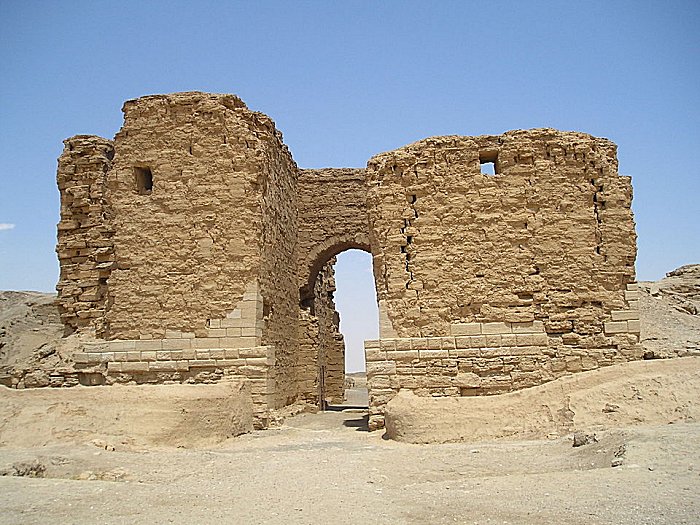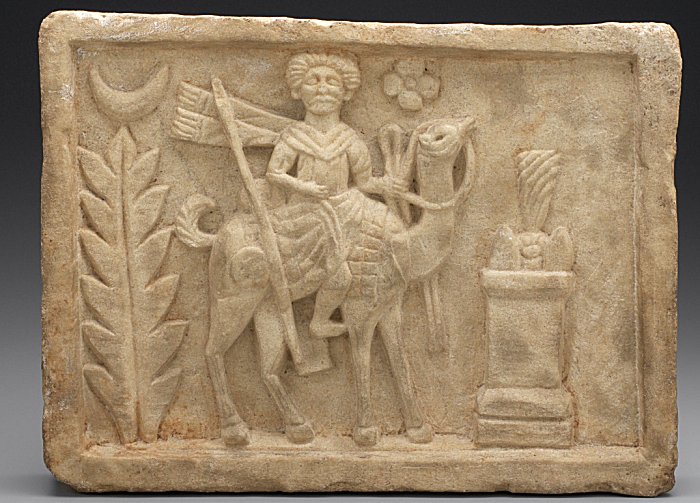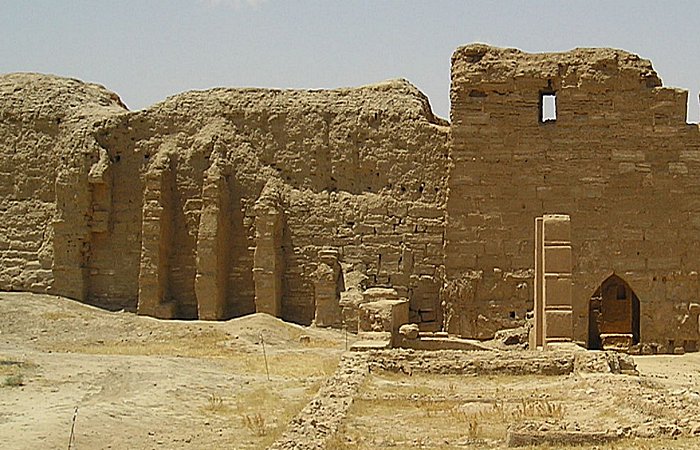Anqa: “Forgotten Twin” Of Dura-Europos Where Time Stood Still

Conny Waters – AncientPages.com – The archaeological site of Dura-Europos, situated in present-day Syria, is widely known for its remarkable state of preservation.
The Palmyrene Gate of Dura-Europos. Image credit: Heretiq – CC BY-SA 2.5
Like Pompeii, this ancient city has yielded many great discoveries, and serves as a window into the world of the ancient Hellenistic, Parthian, and Roman periods.
Seleucus Nicator founded the city in 303 BC, but let’s be honest, it was just a fortress for most of the Seleucid rule. It wasn’t until the Parthians took over around 113 BC that things really started to pick up.
The city grew and shifted its focus from military to more civil functions. The Romans had their turn at ruling between 115-117 and again after 165, but it was those Parthians who really made the place significant that it served as a significant provincial administrative center.
The Romans decisively captured Dura-Europos in 165 AD and substantially expanded it as their easternmost fortification in Mesopotamia, until it was seized by the Sasanian Empire after a siege in 256–257 AD. The city’s population was deported, and the abandoned Dura-Europos finally vanished from sight.
Like the renowned Pompeii, this ancient city has yielded numerous invaluable discoveries, offering an unparalleled glimpse into the realms of the ancient Hellenistic, Parthian, and Roman eras.
Despite the prominence of Dura-Europos in the field of Near Eastern scholarship, another city, located merely a few miles downstream along the Euphrates River, presents a long-neglected opportunity for scholarly exploration.
A new study entitled “The Ancient City of Giddan/Eddana (Anqa, Iraq), the ‘Forgotten Twin’ of Dura-Europos,” sheds light on this significant archaeological discovery.
Arsu Riding a Camel, relief found in the Temple of Adonis in Dura Europos. Image credit: Photo credit: Yale University Art Gallery – Public Domain
The paper identifies the city of Anqa as a remarkably similar counterpart to the renowned Dura-Europos, exhibiting comparable dimensions, composition, and potentially equal scholarly value for the study of the region.
The archaeological site of Anqa – situated near the Syrian border, directly across from the ancient city of Dura-Europos – is in the contemporary Al-Qaim district of the Anbar Governorate in Iraq. The remains of Anqa include a tell mound at the northern part of the site, a polygonal inner wall circuit, and an extensive outer defensive wall (or enceinte), serving as a fortification for the settlement.
Strategically positioned at the juncture where the Euphrates floodplain undergoes a significant constriction, the city’s location would have controlled movement between the densely populated upstream region of the valley and the vital trade route downstream, connecting Syria, Northern Mesopotamia, and Babylonia.
This strategic positioning played an important role in the city’s economic and strategic significance.
Nonetheless, archaeologists remained entirely disregarded until the publication of a British Middle Euphrates expedition survey in 1850.
Temple of Bel/Palmyrene gods. Image credit: Heretiq – CC BY-SA 2.5 DEED
A comprehensive examination of the site was undertaken in the latter part of the 1930s by Aurel Stein, and delivered aerial photographic documentation of the extant structures.
Still, there was little desire to learn more than the geographical location of this twin city to Dura-Europos.
The discrepancy in scholarly attention between Anqa and Dura-Europos can be attributed, as postulated by the author Simon James, to the legacy of British and French colonial intervention in the region. In the aftermath of the San Remo conference in 1920, Iraq fell under British control, while Syria was placed under French jurisdiction.
As James said, this “new political, military, and administrative boundary created a barrier to research and understanding of the earlier history of the region as a whole.”
While the sites of Dura-Europos and others in Iraq and Syria have unfortunately fallen victim to looting, destruction, and civilian casualties as a result of regional conflicts, Anqa has remained relatively untouched.
As further archaeological investigations are conducted, it is imperative that this site be preserved and studied with the utmost diligence and respect for its historical significance.
The ongoing study of Anqa holds the potential to yield invaluable insights into the historical narrative of the Middle Euphrates region. Moreover, as the advancement of digital scholarship facilitates intellectual collaboration transcending political boundaries, the examination of such sites may serve as a means to confront and address the enduring ramifications of colonialism within the field of archaeology, as eloquently articulated by Simon James.
Written by Conny Waters – AncientPages.com Staff Writer







